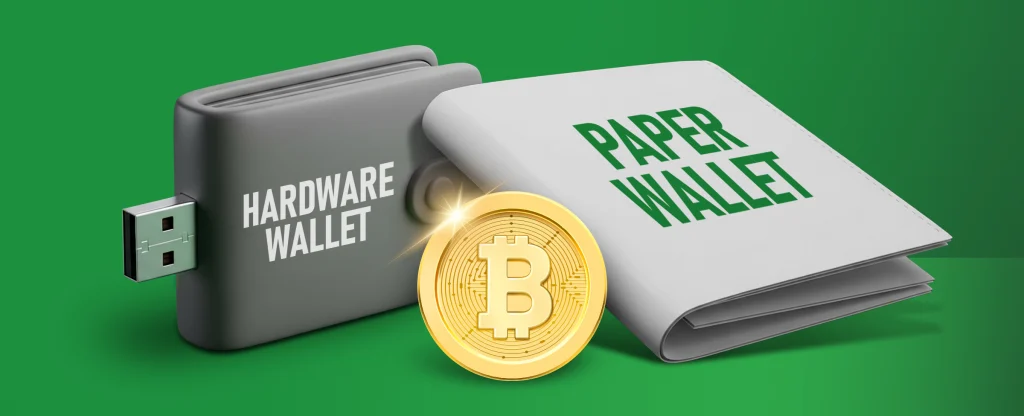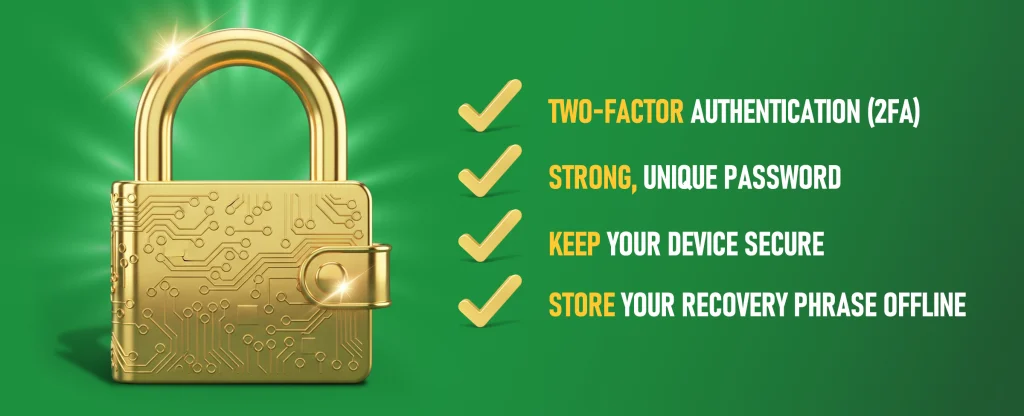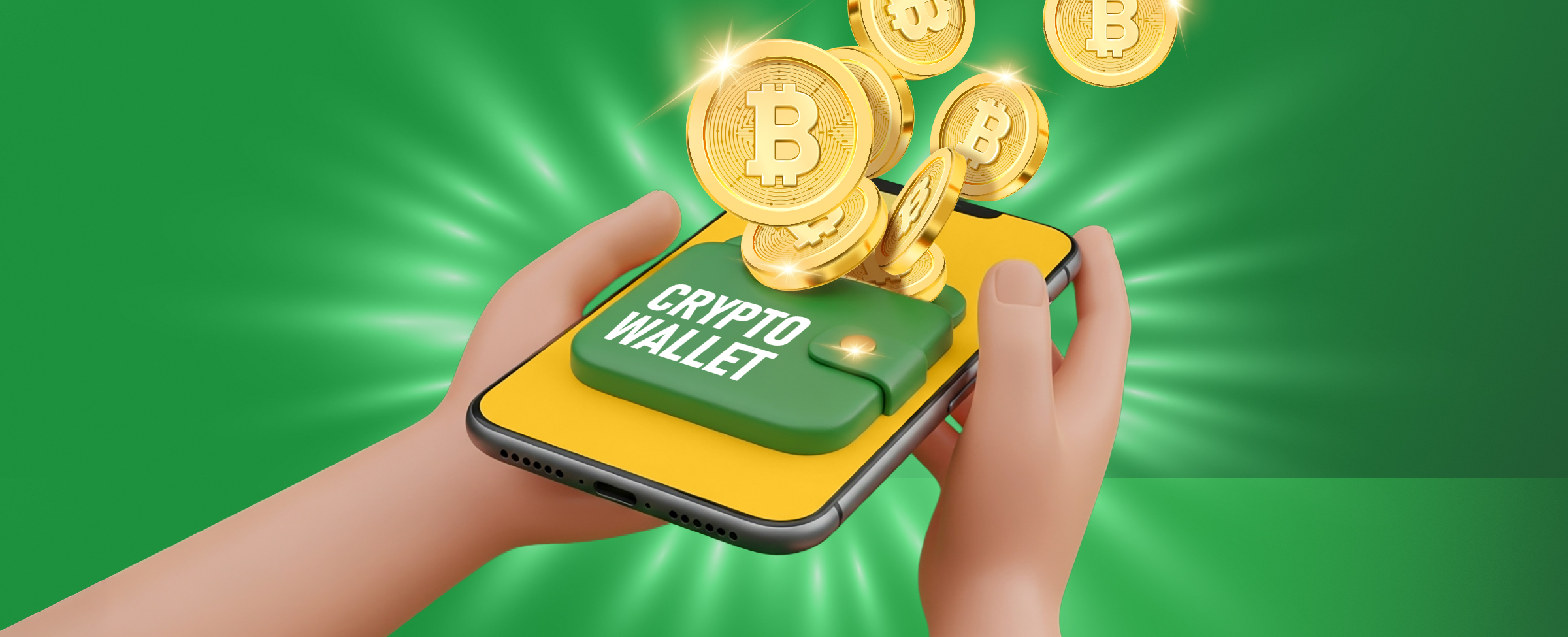If you’re thinking about buying, trading or gambling with cryptocurrency, one of the first things you’ll need is a crypto wallet. A crypto wallet lets you store, send, and receive digital assets like Bitcoin, Ethereum, and heaps of other coins securely. But if you’re new to the world of crypto, setting up a wallet can feel a bit overwhelming at first. But fear not as the team here at Joe Fortune have this easy-to-follow guide that walks you through how to create a crypto wallet. We’ll explain the different types of wallets, how to set one up, what security features to use, and even answer some common questions at the end.
Choose a Wallet Type
Before you create your wallet, the first thing to do is decide which type of wallet suits your needs. Crypto wallets come in a few different forms, each with their own pros and cons.
Let’s look at the main types:
Software Wallet
A software wallet is a digital wallet you can download as an app on your phone, desktop, or browser. It stores your private keys (which give you access to your crypto) securely on your device.
The Pros:
- Easy to set up and use
- Great for beginners
- Good for day-to-day trading
The Cons:
- Connected to the internet, so more vulnerable to hacks
- Depends on the security of your device
Popular options:
- MetaMask
- Binance
- eToro
- Exodus
Hardware Wallet
A hardware wallet is a physical device, like a USB stick, that stores your private keys offline. This makes it one of the safest ways to store crypto.
The Pros:
- Very secure – keys never touch the internet
- Great for long-term storage
- Safe from malware and viruses
The Cons:
- Costs money to buy
- Slightly more effort to use
- Can be lost or damaged (though you can recover your funds with a backup)
Popular options:
- Ledger Nano X
- Trezor One
- Tangem
Paper Wallet
A paper wallet is exactly what it sounds like, your wallet is private and public keys printed or written on paper. It’s an old-school option that’s completely offline.
The Pros:
- Free to create
- Totally immune to online hacks
The Cons:
- Must be generated on a secure, offline device
- Easy to lose, damage or misplace
- Not beginner-friendly
Most people these days prefer software or hardware wallets for ease and safety, but it’s good to know your options.

Do Your Research on Different Wallet Providers
Once you’ve picked a wallet type, don’t just go with the first one you find. Do a bit of digging on wallet providers by looking at independent reviews online. Make sure the one you choose is trustworthy, widely used, and has good reviews.
Tips when looking:
- Customer support (just in case you get stuck)
- Security features (for example two-factor authentication or recovery phrases)
- User experience (make sure the app easy to use)
- Compatibility (be sure to check it holds the coins or crypto you want to buy and sell)
It’s also worth checking whether the wallet is custodial (you don’t control the private keys) or non-custodial (you do control the keys). For maximum control and security, go for a non-custodial wallet.
Create an Account and Set Up Your Wallet
Now you’re ready to set up your wallet. The steps will vary slightly depending on whether you’re using a software, hardware or paper wallet, but here’s the general process:
- Download the app or software from the official website, play store or app store.
- Create an account (as required), note that some wallets don’t even need an email address these days.
- Write down your recovery phrase, this is usually 12 or 24 random words. This is very very important. If you ever lose your wallet or forget your password, this phrase is your only way to get your crypto back.
- Create a strong password or PIN for added protection.
- Back up your wallet. You can do this either to the cloud (for software wallets) or on paper (for hardware and paper wallets).
- Take your time on all these steps as if you skip the recovery phrase or store it carelessly, you could lose access to your wallet permanently.

Set Up Additional Security Measures
Once your wallet is ready to go, it’s smart to lock it down with some extra security.
Here are a few tips we strongly recommend:
- Enable two-factor authentication (2FA). This adds an additional layer of protection when logging in or making transactions.
- Use a strong, unique password. Try to avoid using the same one you use elsewhere.
- Keep your device secure, this means install updates, don’t click dodgy links, and avoid using public Wi-Fi for sensitive transactions.
- Store your recovery phrase offline. Be sure never take a screenshot or email it to yourself. Write it down and keep it in a safe place.
- For hardware wallets, you’ll also want to make sure you store the device itself safely – like in a safe, fireproof box or in a secret spot somewhere.
Fund Your Wallet
Now that your wallet’s all set up, it’s time to add some crypto. You can fund your wallet in a couple of ways:
- Buy crypto from an exchange such as Binance, Coinbase, or an Aussie favourite like Swyftx, then send it to your wallet address.
- Receive crypto from someone else – just give them your wallet’s public address (this is safe to share).
- Transfer from another wallet if you’ve already got funds elsewhere.
To find your wallet address:
- Open your wallet
- Select the crypto you want (e.g. Bitcoin or Ethereum)
- Click receive or deposit – your address will show as a long string of letters/numbers or possibly as a QR code.
Make sure you double-check the address before sending any funds as sending crypto to the wrong address can’t be undone and you will lose it.
Crypto Wallet FAQs
Which Crypto Wallet Is Best for Beginners?
If you’re just starting out, a software wallet like Trust Wallet or MetaMask is a good choice. They’re easy to set up and have user-friendly interfaces. They also support a wide range of cryptocurrencies, and you can connect them to decentralised apps (dApps) if you want to explore more of the crypto world.
Is a Crypto Wallet Free?
- Most software wallets are completely free to download and use. You only pay network fees (like gas fees on Ethereum) when sending or swapping crypto.
- Hardware wallets, on the other hand, cost money upfront – usually anywhere from $80 to $300, depending on the brand and features. But they’re worth it if you’re planning to store large amounts of crypto long-term.
- Paper wallets are also free to make, but not very user-friendly or secure for beginners.
What Is the Safest Crypto Wallet?
The safest option for storing crypto is a hardware wallet, like a Ledger Nano X or Trezor Model T. These keep your private keys offline, making them almost impossible to hack remotely. They’re ideal for long-term holders or anyone storing a significant amount of crypto.
Just remember: no matter what type of wallet you use, your security depends on how carefully you manage your private keys and recovery phrases. The safest wallet in the world won’t help if you lose your backup or fall for a phishing scam.
Final Thoughts
Creating a crypto wallet is a crucial first step if you want to take control of your digital assets. Whether you’re in it for the long haul, keen to explore the world of crypto or even start playing at online casinos, your wallet is your gateway to holding, sending, and receiving coins safely.
Start by choosing the right wallet type software, hardware, or paper based on your needs and experience level. Then, take the time to secure your wallet properly and back it up. Once that’s done, you’re ready to fund your wallet and get started with your crypto journey.
And remember to always keep your recovery phrase safe, never share your private keys, and double-check every transaction. With the right wallet and a bit of caution, you’ll be well on your way to navigating crypto like a pro.
